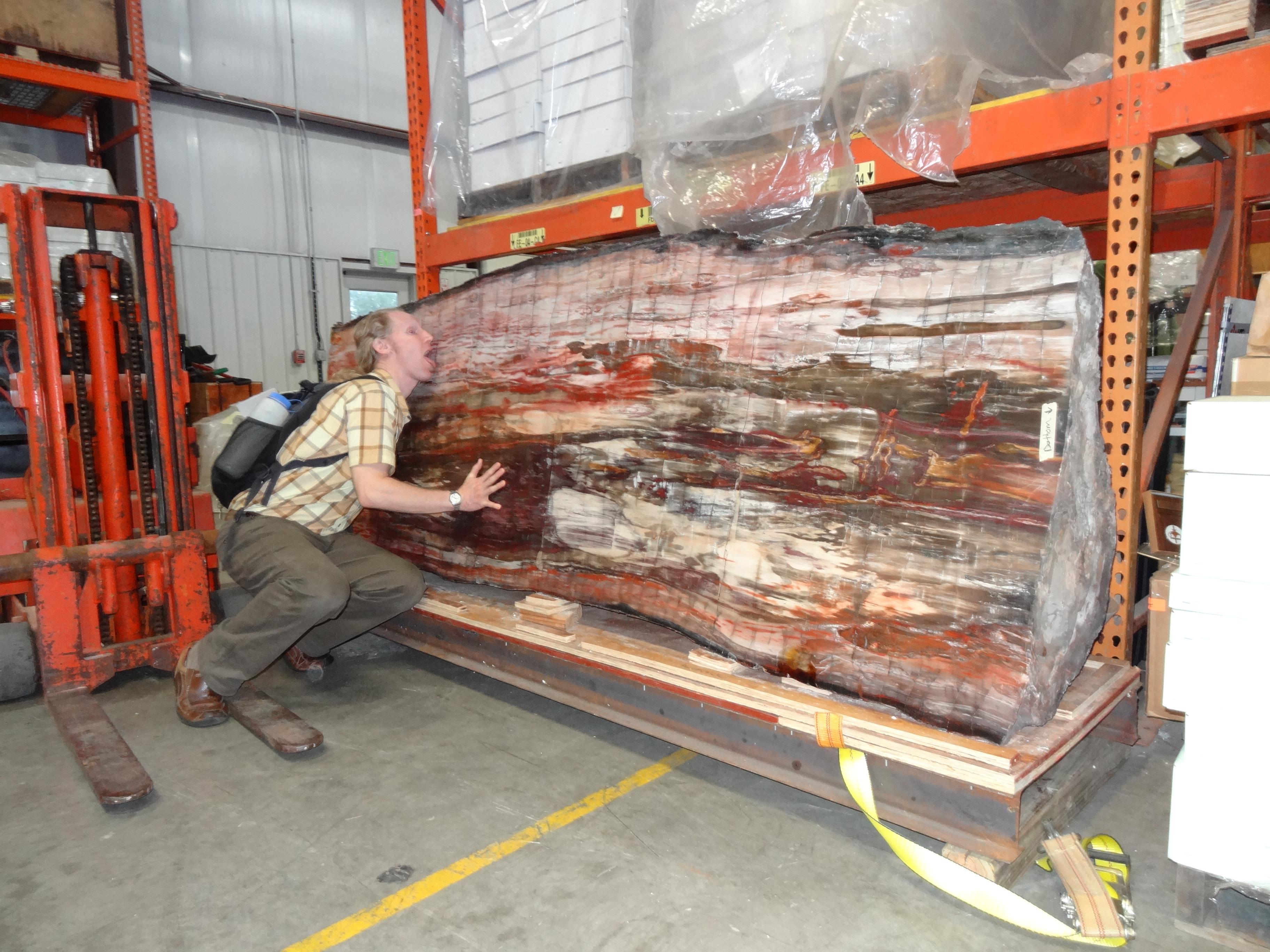
The new attraction looms over other minerals and gems in the museum’s main hall. The massive trunk stands nine feet tall and weighs four tons.
The pre-historic log comes from a rare mineral deposit in northwest China. Millions of years ago the tree fell over and sunk into the Earth. As the tree decayed it became petrified in murky water. As time passed, the tree transformed from wood to glass.
“Silica, dissolved in groundwater, moved through the tree and basically filled in pore spaces,” DMNS curator James Hagadorn says.
Mineral and gem expert Graham Sutton discovered the tree while prospecting in northwest China. Sutton works for Collector’s Edge, a mineral showroom in Golden just outside of Denver.
In 2006, Sutton wandered through an eclectic market in China's Xinjiang province. Amidst nuts, swords, and jewelry, he stumbled across a small shop with elaborate slabs of petrified wood. Sutton befriended the shop’s owner, Mr. Xien.
“So he took me out to Qitai,” Sutton says of Xien. “I met some of these local Uyghur guys that were all collecting this and I started buying whole logs rather than the individual pieces.”
Sutton says he passed through villages in the area where ancient trees 75 feet long lined the streets. One day in Qitai he found the exceptionally large log now on display in Denver. He paid $12,000 for the prize specimen, and then shipped it 2,600 miles to Hong Kong.
It required two days to saw the tree in half and nearly a month to polish it. Eventually, Sutton sent it to Tucson, Arizona for the city’s mineral and gem show. It was at the show that DMNS curator Hagadorn first saw -- and was awed by -- the tree.
Sutton sold the tree to the Stone family in Boston. But then the family decided to donate the tree instead of display it in their home.
It was at this point that Sutton contacted Hagadorn. The DMNS curator was thrilled to receive Sutton’s phone call, having been so taken with the tree when he first saw it on display in Tucson.
Shipping the tree to the museum was a lengthy process involving a huge team and careful logistics.
Hagadorn says the new exhibit reveals important clues about ancient weather patterns that are recorded in the tree's rings. Every layer records information about climate, such as how hot or wet it was.
“In this case, these trees have growth rings that record monsoons,” Hagadorn says. “They’re not monsoons like you see today in Asia or even here in Colorado, these are like super monsoons. Dinosaur bones from the same deposits record the same super monsoonal cycles.”
In other words, humans have never witnessed the kinds of storms recorded in the tree’s coils.
The petrified tree is a part of DMNS’s permanent collection.
Since 2010, the area in China, where the log was discovered, has been protected as part of the Qitai Silicified Wood-Dinosaur National Geopark.








